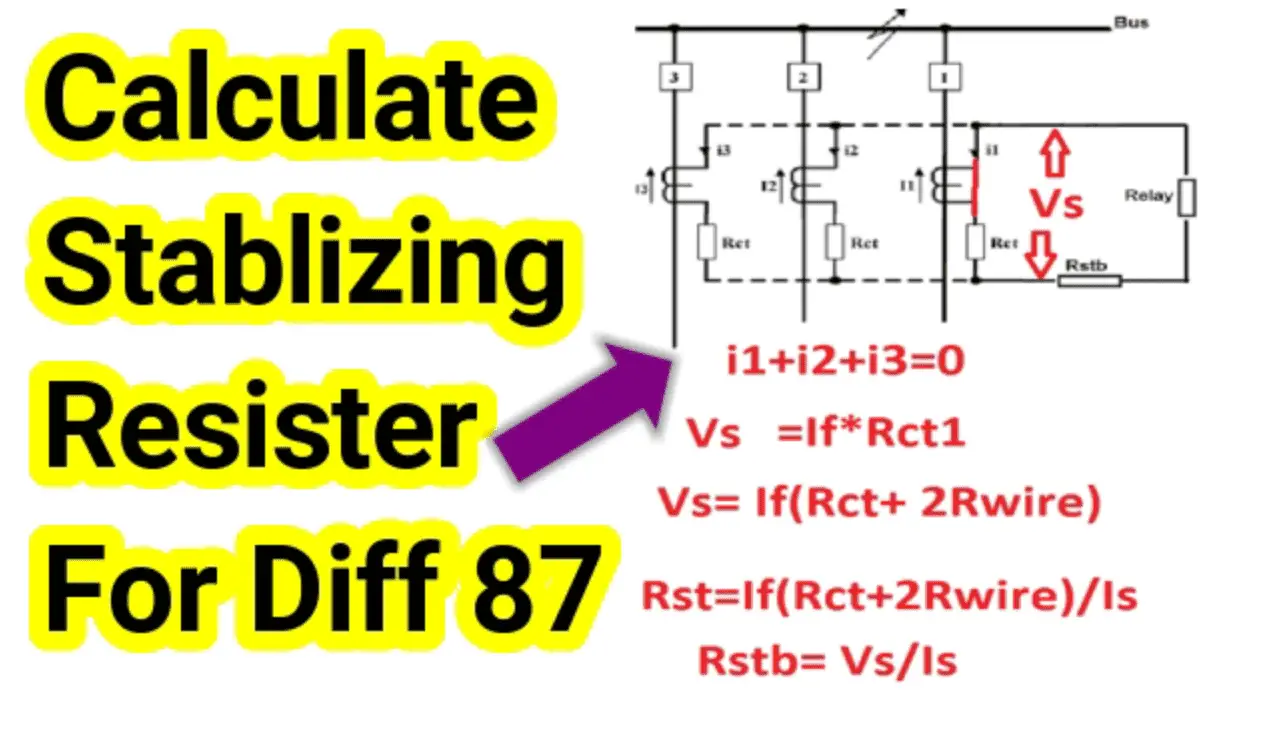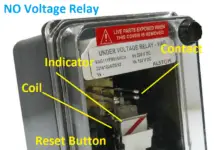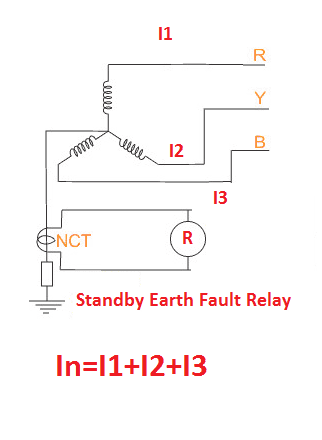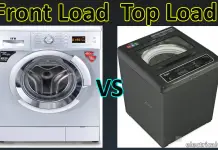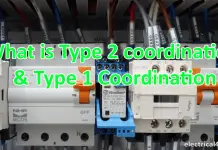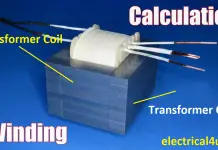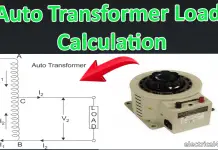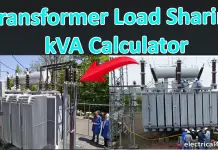Difference between inter turn short and internal short?
Electrical machine consists of copper winding and they will be insulated and wound in a core. The coil of each phase wound one after one, just like a layer see the figure of an Transformer winding. Short circuit is defined as the contact between the two or more live phase touching each other. This is also called as short circuit fault. During the short circuit the voltage across the faulty phase become zero and the all circuit current flow through short circuit path. Hence flow of high current in a smaller path leads to flash over. The short circuit is classified in to two categories. They are
- Inter turn short circuit
- Internal short circuit
Let see the difference between Inter Turn Short And Internal Short
Inter turn circuit:
The short circuit occurs between the same phase winding. i.e see the diagram where the fault occurs between the same winding turns. You know that, the current always prepare for shorter path. Hence, In this winding, the total current does not flow, the remaining (in between) winding. Hence the current circulation in the number of turns (ampere turns) become reduces. It affects the total flux produced in the secondary winding or primary winding (depending upon the fault location of the winding). These scenario leads to high input current from the source. Such a fault between the same phase is called in turn short.
[wp_ad_camp_2]
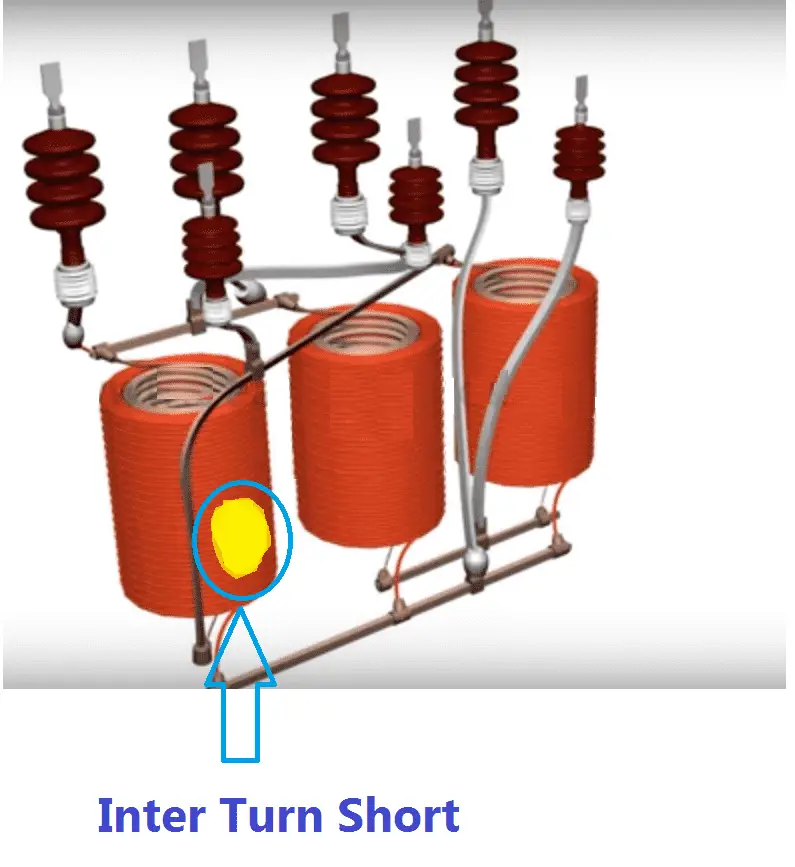
The total damage in the inter turn short is less as compared with internal short circuit. Because of the voltage distribution between the winding is less. The fault current is purely depending on the voltage between faulty area before the fault occurs. That’s why high voltage transmission Power system creates high fault current as compared with low voltage transmission.
Note: Inter Turn Short create heavy unbalance current between the phases. i.e in above picture, the inter turn short occur in a single winding. Since the voltage distribution per gets reduced on short circuited turn. So that, the faulty turn can not take the active loads. Therefore, these loads will be shifted to other two windings directly. Therefore other two winding withdraw high current.
Internal short circuit:
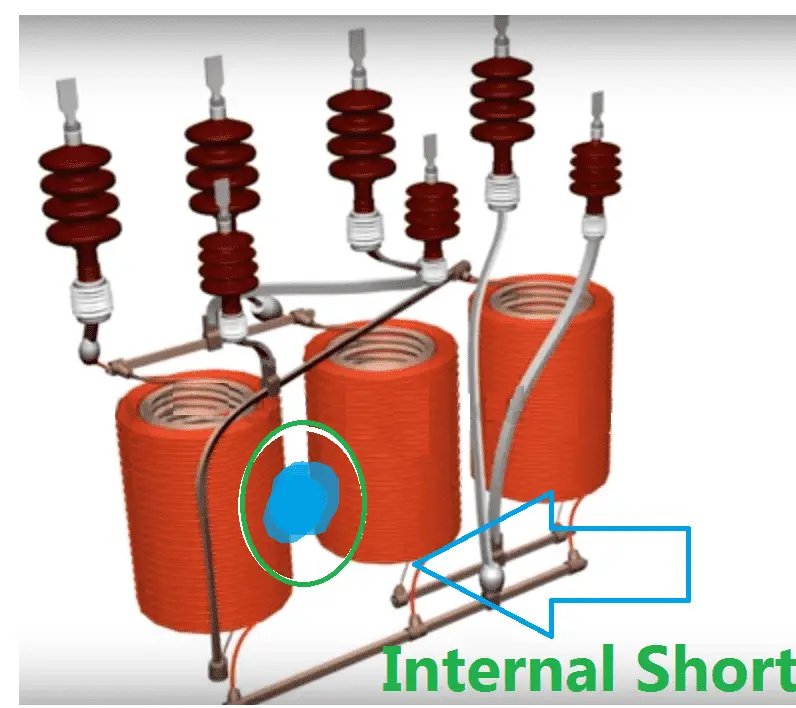
The short circuit occurs in between two different phase winding is called internal short circuit. The internal short circuit damages the equipment seriously. In this fault also, the fault current depends on the position of the fault. For star winding transformer, if the fault nearer to the star end connection means which does not cause any damages. At that same time, the fault at live input power supply side means, the transformer might get flash heavily.
To isolate the transformer from internal short circuit and inter turn short circuit faults, generally differential relays and buchholz relays are used.
[wp_ad_camp_2]
Also see:
- What is alternator All about alternator parts Overview for beginner
- Zone of Protection System
- 100% Stator Earth Fault Protection of Generator
- 6 Types of Over Current Relay Used in Power System Protection
- Bus Bar Differential Protection or Circulating Current Protection
- Busbar Protection & Frame Leakage Protection Working Principle
- Backup impedance Protection Working Principle (21G)
- Directional Over Current & Non Directional Over Current Protection Working Principle
- Distance Protection Working Principle & Fault Location Detection
- Merz Price Differential Protection for Generators
- Merz Price Differential Protection for Transformer

